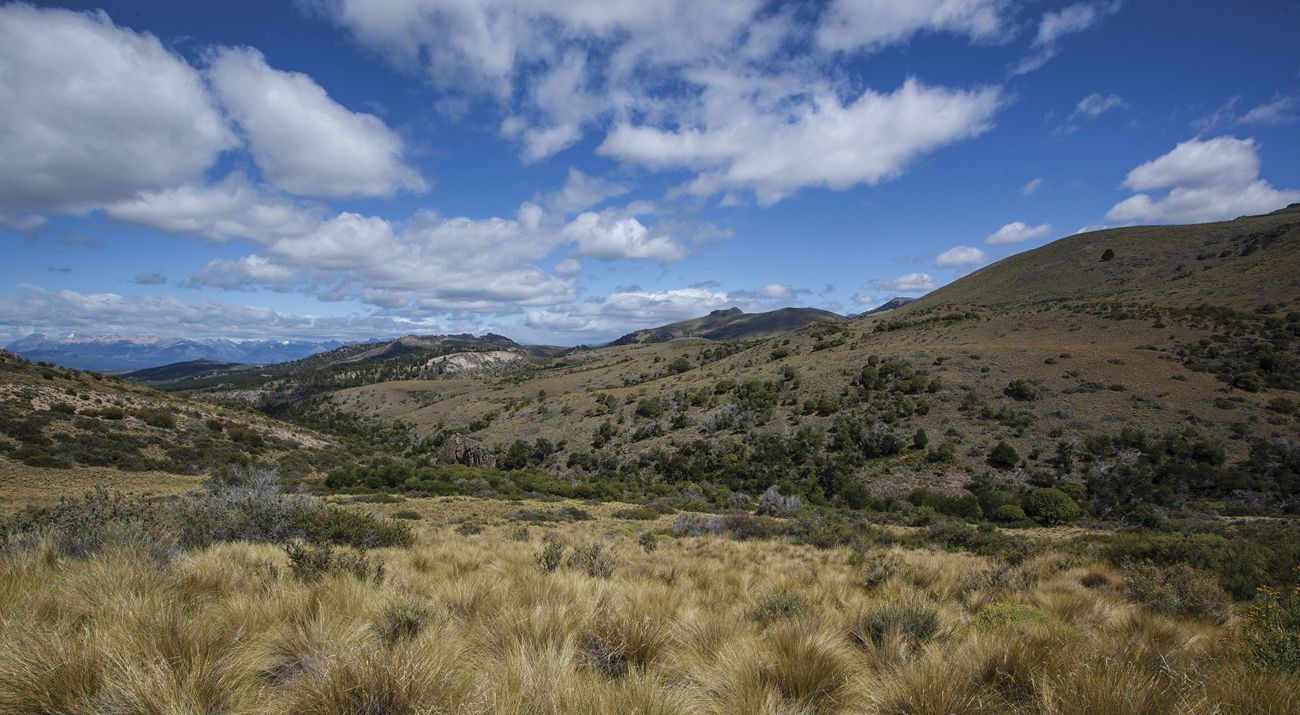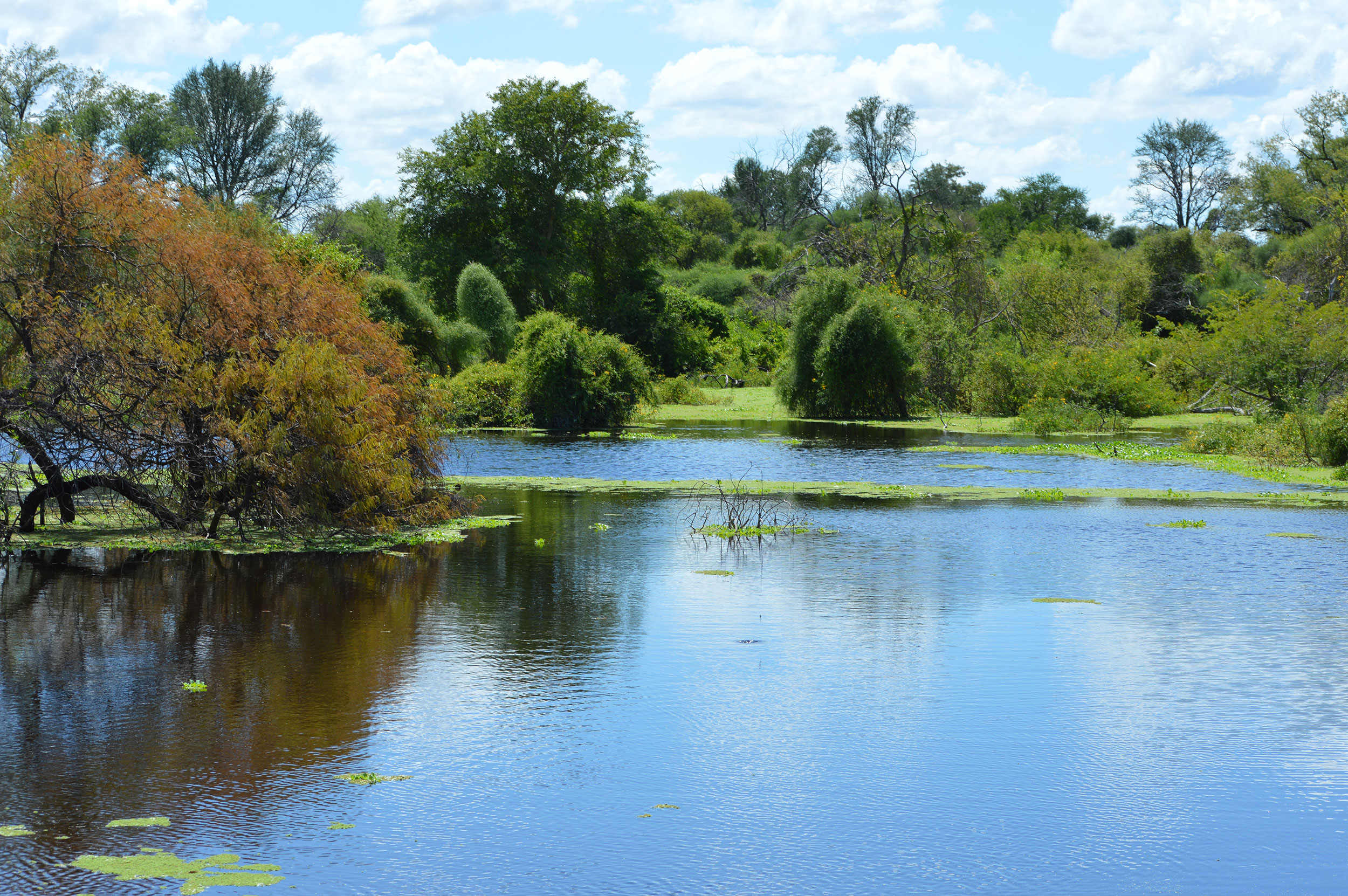Gran Chaco and Patagonia
Among the most important ecosystems in Argentina, whose degradation represents a risk not only to the country but globally, are the Gran Chaco and Patagonia, two Iconic Places in Latin America. In these areas, TNC can deliver nature-based solutions at a scale that addresses the next decade's global environmental challenges.

How sustainable grazing can save Patagonia's natural landscapes.
Tackling desertification in one of the last pristine environments on earth
Patagonia is a sparsely populated ecoregion at the southern end of South America. It stretches across approximately 190 million acres in Chile and Argentina. It is well-known for its natural, cultural, and economic importance to those countries, Latin America, and the world.
The major geological transformations that took place millions of years ago gave Patagonia its striking landscape, lakes, and rivers. The region is home to an incredible variety of wildlife and plants and the habitat of an incredible array of bird species, such as the Andean condor and the black-chested buzzard eagle.
Almost two-thirds of Patagonia is in Argentina, where it's surrounded by the Andes Mountains on one side and the Atlantic Ocean on the other. Tablelands, deserts, and steppes compose the landscape, making for stunning mountain scenery and the largest expanse of temperate grassland in South America.
TNC considers Patagonia one of Latin America's Iconic Places. Given its unique topography, it offers an opportunity to deliver high-impact, significant outcomes for biodiversity, climate, and sustainable development. But a serious problem haunts Patagonia: Desertification.
Today, 70 percent of the Patagonia steppe is suffering from different degrees of desertification. It erodes and degrades the soil, making it unable to sustain life. The over 100 years of unsustainable sheep-grazing has more than taken its toll. But despite these alarming numbers, Patagonia remains one of the last pristine environments on earth.
We need to find a balance between safeguarding livelihoods and a way of life and protecting the grasslands vital for our planet's health.
Fortin Chacabuco – Places We Protect
TNC understands that we must share the responsibility of working at a pace and at a scale that will make a difference and allow future generations to inherit a thriving, healthy planet. That is why we work on a 13,500-acre ranch called Fortin Chacabuco, where TNC highlights its sustainable grazing work in Patagonia and has obtained key conservation objectives. One such development is the applied research carried out to help protect ecosystems and their biodiversity, such as the social tuco-tuco, a neotropical rodent whose popular name comes from the "tuc-tuc" sound it makes while it excavates its burrows.
In 2016, Fortin Chacabuco was partly donated to TNC to become a pioneering open conservation ranch dedicated to developing, implementing, and disseminating sustainable, science-based grazing advances.
We pledged to restore and maintain the Patagonian grasslands' health, its soils, and water sources. We use science to find ways to make sheep grazing sustainable and rivers healthy and abundant. To get there, we are joining with the people that matter: ranchers, producers, local communities, researchers, and government.
TNC and the ranch itself gained the local community's support thanks to work initiated in 2016. Liaisons with researchers, scientists, and academic and educational establishments have become consolidated formal partnerships. Simultaneously, the ranch has become an open laboratory for applied research on multiple topics related to regenerative ranching and sustainable grazing in northern Patagonia.
Fortin Chacabuco is an asset with the potential to serve as a hub for the convergence of other similar efforts to combine ranching and conservation across Patagonia and other geographies. The proposition is that Fortin Chacabuco is integrated into the chain of properties that are part of the Leveraging our Lands (LoL) initiative currently underway in North America.
We are carrying out science projects on the ranch, from measuring the effects of fishing on the Limay River to finding out how grazing affects the home of the tuco-tuco. We created a sustainable grazing standard for local ranchers and have become a meeting point for producers looking to protect their lands through science and private conservation.
Our work at Fortin Chacabuco has intrinsic conservation value. In addition to the effective conservation of key natural and cultural resources within the property—Patagonian grasslands, water systems, and endangered species, we will continue implementing regenerative science-based grazing practices. We will also strengthen our community outreach and promote recently-discovered archaeological remains to attract diverse audiences to our work.
By working with governments, ranchers, farmers, and global markets to develop and demonstrate new solutions to fast-spreading desertification in Patagonia, we achieve tangible conservation results that are the gateway to systemic, large-scale conservation throughout the region.
TNC Argentina's efforts to build partnerships have a global impact and address climate change, one of humanity's most complex issues. Our work can help countries meet their climate commitments, biodiversity and sustainable development goals, and the triple benefits of investing in nature. Our Program extends climate benefits across the three basic pillars of our work: water, nature and agriculture, and nature conservation. It creates and maintains vast carbon sinks and is embedded in regenerative practices that strengthen the essential services nature provides; what we do in Argentina will contribute continually toward climate-change mitigation and adaptation.
Gran Chaco: Protecting the second-largest Forest in South America
- The Gran Chaco is the second-largest forest in South America, behind only the Amazon rainforest. It is one of the most deforested areas on the planet.
- TNC is implementing actions to protect the Gran Chaco, producing food to actively restore habitat and protect biodiversity while reducing greenhouse gas emissions.
The Gran Chaco is a hot and semiarid lowland area with one of the highest deforestation rates on the planet. Every month, an area over 133 square miles is lost. Projections point to a loss of millions of additional acres of native vegetation by 2030. The biome extends over Argentina, Paraguay, Bolivia, and Brazil, bringing together more than 50 different ecosystems united by the same pattern of vegetation and climate. It also provides an environmental and bioclimatic balance for the continent.
Two-thirds of the Gran Chaco, or 130 million acres, are in Argentina. Its massive forests are home to unique vegetation and wildlife, including 3,400 plant and 500 bird species and hundreds of mammals, reptiles, and amphibians. Nine million people live in the Gran Chaco, including several Indigenous communities. The encroaching agricultural and livestock frontier, along with hunting and the effects of climate change, are also key factors in a situation that requires urgent measures.
Twenty-five percent of the Gran Chaco in Argentina has been cleared for agriculture, mainly extensive crop and livestock production, and mostly in the last 20 years. Variations in climate have also contributed to rapid deforestation, soil degradation, and biodiversity loss. The growing global demand for food will pressure South America's major agricultural expansion frontiers, particularly soybean and beef production. TNC considers the Gran Chaco one of Latin America's iconic places and a Global Foodscape. That means that strategic actions can be layered to increase efficiency, reduce negative impacts, and amplify visibility while contributing to nationally determined environmental and development goals.
REGENERATIVE FOOD SYSTEMS
We've been warned for some time that the way we currently produce most of our food worsens climate change and biodiversity loss. Agriculture is responsible for a quarter of greenhouse gas emissions, 70 percent of freshwater use, and 80 percent of habitat loss worldwide. That is why TNC is carrying out a Regenerative Food System strategy that promotes science-based practices, methods, and policies supporting land restoration, protecting water, and increasing biodiversity in food production areas, including in the Gran Chaco.
The purpose is to produce food—whether on land or at sea—in ways that actively restore habitat and protect biodiversity in and around production areas while reducing greenhouse gas emissions. In some cases, Regenerative Food Systems can produce even more food than traditional systems—and, crucially, they preserve the livelihoods of the farmers, fishers, ranchers, and others who work to provide our food, now and in the long run.
Besides providing environmental benefits and securing our food supply, Regenerative Food Systems improve the livelihood of millions who provide for people and nature. For instance, soybean farmers can significantly increase their primary cash crop productivity and value – while boosting soil health and mitigating climate change – by reducing tillage, rotating in other crops, and planting winter cover vegetation. That's a win-win for all.
We are implementing conservation actions with local and regional partners to protect and restore the Gran Chaco Forest ecosystems by ensuring that key commodities, such as soy and beef, are sourced from deforestation-free areas only. TNC also facilitates the shift toward sustainable agricultural production of these globally-traded commodities.
TECHNOLOGY IN THE SERVICE OF SUSTAINABILITY
With the support of regional and local partners, TNC has been driving initiatives that combine values critical to nature and production. Smart technology and innovation reduce the agricultural footprint, and there is the growing involvement of producers in efforts to maintain the natural base of productive lands.
To support the sustainable management of the Gran Chaco, TNC and its partners developed Agroideal and MapBiomas.
Agroideal
Agroideal is a decision support tool that facilitates the sustainable production of soy in South America. After successfully implementing Brazil, Agroideal generates analysis and evaluates socio-environmental risks for the soy supply chain in the Gran Chaco area.
This tool helps corporations verify sources with no-deforestation risk or cleared areas that might be available for soy crops, including pasture lands with the potential to become crop zones. They also verify whether there are public conservation areas or Indigenous Lands nearby. If there are risks, they will consider mitigation measures or may choose to assess possible soy crop areas elsewhere. TNC's ultimate goal is to replicate the pilot in other areas, such as the Paraguayan Chaco.
MapBiomas
MapBiomas Chaco is an initiative that involves specialists from Argentina, Brazil, and Paraguay in a collaborative network on topics such as land use, satellite remote sensing, geographic information systems, and programming. MapBiomas' objective is to use quality and low-cost technology to produce a series of annual land-use and coverage maps utilizing the Google Engine platform.

